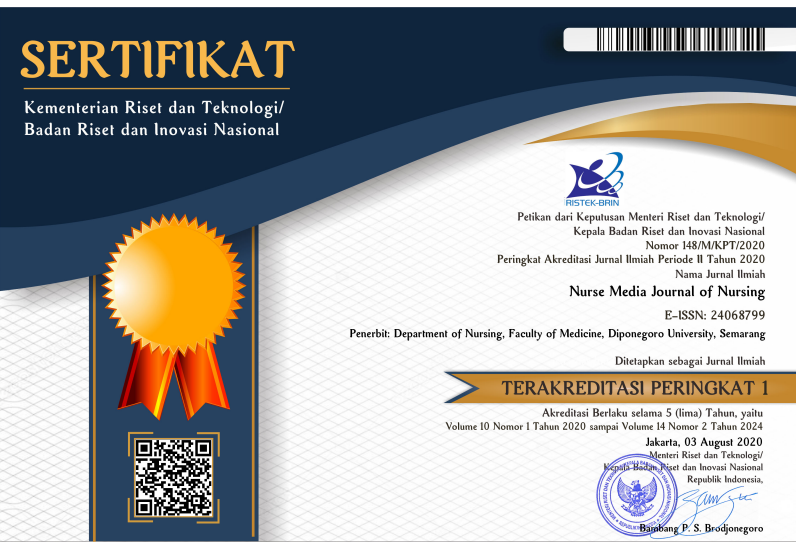Constructing Sustainable Maternal and Child Health Strategies: Analyzing Factors Associated with Low-Birth-Weight Incidence in Indonesia Gita Nirmala Sari
Keywords:
Antenatal Care, Indonesia, low birth weight, maternal anemia, maternal and child healthAbstract
Background: Maternal and child health (MCH) is crucial for public health, especially in low- and middle-income countries like Indonesia. Despite improvements in healthcare infrastructure, challenges remain in reducing maternal and neonatal mortality rates, with low birth weight (LBW) posing a significant concern. Previous research has largely examined individual factors, such as maternal age, parity, or nutritional status in isolation. To date, there has been no comprehensive analysis integrating the various determinants of LBW within the Indonesian context.
Purpose: This study aimed to comprehensively analyze factors associated with LBW incidence in Indonesia to inform sustainable MCH strategies.
Methods: A cross-sectional study design was used to analyze data from 420 newborns and their mothers. A structured questionnaire and medical record reviews were used to collect data on maternal characteristics, antenatal care attendance, birth outcomes, and infant characteristics. Data were obtained from maternal and child health reports collected by primary health centers and hospitals under the Ministry of Health between 2021 and 2023. Statistical analyses, including bivariate Chi-square tests and multivariable logistic regression, were conducted to identify factors associated with LBW incidence.
Results: The prevalence of LBW among newborns was 34.3%. Significant associations were found between LBW and maternal anemia (OR 1.53; 95% CI 1.16–2.03), irregular antenatal care attendance (OR 11.9; 95% CI 8.17–17.32), multiparity (OR 0.61; 95% CI 0.43–0.88), and preterm birth (OR 11.22; 95% CI 7.55–16.68). Primiparous mothers and full-term infants were less likely to experience LBW. Among the associated factors, irregular antenatal care visits and preterm birth emerged as the most dominant risk factors. No significant associations were observed with maternal complications, chronic diseases, infant gender, mode of delivery, or maternal age.
Conclusion: Targeted interventions addressing maternal anemia, improving access to and adherence with antenatal care, and preventing preterm births are critical strategies for reducing LBW in Indonesia. The findings in this study underscore the need for greater attention to improving maternal nutrition and encouraging pregnant women to attend regular antenatal care visits.
Downloads
References
1. Ahrens, K. A., Thoma, M. A., & Rossen, L. M. (2017). Interpregnancy interval and adverse pregnancy outcome; An analysis of succesive pregnancies. Obstet Gynecol, 130(2), 1–7
2. Arsyi, M. (2021). Maternal Factors Affecting the Incidence of Low Birth Weight (LBW) in Indonesia. International Journal of Pharmaceutical Research, 13(01), 4197–4203. https://doi.org/10.31838/ijpr/2021.13.01.557
3. Blencowe, H., Krasevec, J., de Onis, M., Black, R. E., An, X., Stevens, G. A., Borghi, E., Hayashi, C., Estevez, D., Cegolon, L., Shiekh, S., Ponce Hardy, V., Lawn, J. E., & Cousens, S. (2019). National, regional, and worldwide estimates of low birthweight in 2015, with trends from 2000: a systematic analysis. The Lancet Global Health, 7(7), e849–e860. https://doi.org/10.1016/S2214-109X(18)30565-5
4. Bodeau-Livinec, F., Briand, V., Berger, J., Xiong, X., Massougbodji, A., Day, K. P., & Cot, M. (2011). Maternal anemia in Benin: Prevalence, risk factors, and association with low birth weight. American Journal of Tropical Medicine and Hygiene, 85(3), 414–420. https://doi.org/10.4269/ajtmh.2011.10-0599
5. Engdaw, G. T., Tesfaye, A. H., Feleke, M., Negash, A., Yeshiwas, A., Addis, W., Angaw, D. A., & Engidaw, M. T. (2023). Effect of antenatal care on low birth weight: a systematic review and meta-analysis in Africa, 2022. Frontiers in Public Health, 11(June), 1–10. https://doi.org/10.3389/fpubh.2023.1158809
6. Garzon, S., Cacciato, P. M., Certelli, C., Salvaggio, C., Magliarditi, M., & Rizzo, G. (2020). Iron deficiency anemia in pregnancy: Novel approaches for an old problem. Oman Medical Journal, 35(5), 1–9. https://doi.org/10.5001/omj.2020.108
7. Kemenkes RI. (2024). Laporan Tematik; Survey kesehatan Indonesia tahun 2023. In Kementrian Kesehatan Republik Indonesia
8. Khan, A., Nasrullah, F. D., & Jaleel, R. (2016). Frequency and risk factors of low birth weight in term pregnancy. Pakistan Journal of Medical Sciences, 32(1), 138–142. https://doi.org/10.12669/pjms.321.8120
9. Liu, D., Li, S., Zhang, B., Kang, Y., Cheng, Y., Zeng, L., Chen, F., Mi, B., Qu, P., Zhao, D., Zhu, Z., Yan, H., Wang, D., & Dang, S. (2022). Findings from a Prospective Study in Northwest China. Nutrients, 14(858), 3–16
10. Maheshwari, A., Bagga, N., & Panigrahay, N. (2022). Extra-uterine Growth Restriction in Preterm Infants. Newborn, 1(1), 67–73. https://doi.org/10.5005/jp-journals-11002-0019
11. Mbuagbaw, L., Habiba Garga, K., & Ongolo-Zogo, P. (2016). Health system and community level interventions for improving antenatal care coverage and health outcomes. Cochrane Database of Systematic Reviews, 2016(2), 1–124. https://doi.org/10.1002/14651858.CD010994
12. Mingude, A. B., Gebretsadik, W., Misker, D., & Woldeamanuel, G. G. (2020). Determinants of low birth weight among live birth newborns delivered at public hospitals in Gamo Gofa Zone, South Ethiopia: Unmatched case control study. SAGE Open Medicine, 8, 1–8. https://doi.org/10.1177/2050312120940544
13. Ministry of Health of the Republic of Indonesia. (2023). Indonesian health survey 2023
14. Morgan, A. S., Mendonça, M., Thiele, N., & David, A. L. (2022). Management and outcomes of extreme preterm birth. The BMJ, 376, 1–9. https://doi.org/10.1136/bmj-2021-055924
15. Okwaraji, Y. B., Krasevec, J., Bradley, E., Conkle, J., Stevens, G. A., Gatica-Domínguez, G., Ohuma, E. O., Coffey, C., Estevez Fernandez, D. G., Blencowe, H., Kimathi, B., Moller, A. B., Lewin, A., Hussain-Alkhateeb, L., Dalmiya, N., Lawn, J. E., Borghi, E., & Hayashi, C. (2024). National, regional, and global estimates of low birthweight in 2020, with trends from 2000: a systematic analysis. The Lancet, 403(10431), 1071–1080. https://doi.org/10.1016/S0140-6736(23)01198-4
16. Oulay, L., Laohasiriwong, W., Phajan, T., Assana, S., & Suwannaphant, K. (2018). Effect of antenatal care on low birth weight prevention in Lao PDR: A case control study. F1000Research, 7(1138), 1–13. https://doi.org/10.12688/f1000research.15295.1
17. Ramlan, P., Sukri, P., Abdullah, M. T., Ibrahim, M. A., Hardianti, & Cahyani, A. (2025). Poverty and Stunting: A Socioeconomic Analysis of Vulnerable Communities; a Systematic Literature Review. IOP Conference Series: Earth and Environmental Science, 1475(1), 1–11. https://doi.org/10.1088/1755-1315/1475/1/012026
18. Rothman, K. J. (2021). The origin of Modern Epidemiology, the book. In European Journal of Epidemiology (Vol. 36, Issue 8). https://doi.org/10.1007/s10654-021-00790-0
19. Shirvani, M. A., & Tayebi, T. (2021). Importance of childbirth preparation classes in improving childbirth self-efficacy and reducing worry in primigravidas. Perinatology, 22(1), 8–14
20. Sungkar, A., Badosono, S., Irwinda, R., Manikam, N. R. M., Sekartini, R., Medise, B. E., & Nasar, S. S. (2022). A life course approach to the prevention of iron deficiency anemia in Indonesia. Nutrients, 14(277), 1–8
21. Tunçalp, Pena-Rosas, J. P., Lawrie, T., Bucagu, M., Oladapo, O. T., Portela, A., & Metin Gülmezoglu, A. (2017). WHO recommendations on antenatal care for a positive pregnancy experience—going beyond survival. BJOG: An International Journal of Obstetrics and Gynaecology, 124(6), 860–862. https://doi.org/10.1111/1471-0528.14599
22. UNICEF. (2023). Low birthweight (Issue July, pp. 1–14). UNICEF. https://data.unicef.org/topic/nutrition/low-birthweight/
23. WHO. (2025). WHO recommendations on maternal health: guidelines approved by the WHO Guidelines Review Committee. In World Health Organization
24. WHO, UNICEF, & UNFPA. (2025). Trends in maternal mortality 2000 to 2020: estimates. In WHO, Geneva. https://www.who.int/reproductivehealth/publications/maternal-mortality-2000-2017/en/
25. Wirawan, F., Yudhantari, D. G. A., & Gayatri, A. (2023). Pre-pregnancy Diet to Maternal and Child Health Outcome: A Scoping Review of Current Evidence. Journal of Preventive Medicine and Public Health, 56(2), 110–127. https://doi.org/10.3961/jpmph.22.472
26. Wulandari, R. D., Laksono, A. D., & Matahari, R. (2023). Policy to Decrease Low Birth Weight in Indonesia: Who Should Be the Target? Nutrients, 15(2), 1–11. https://doi.org/10.3390/nu15020465
27. Wulandari, R. D., Laksono, A. D., & Rohmah, N. (2021). Urban-rural disparities of antenatal care in South East Asia: a case study in the Philippines and Indonesia. BMC Public Health, 21(1), 1221. https://doi.org/10.1186/s12889-021-11318-2
28. Yasin, R., Azhar, M., Allahuddin, Z., Das, J. K., & Bhutta, Z. A. (2024). Antenatal care strategies to improve perinatal and newborn outcomes. Neonatology, 122(suppl 1), 1–30. https://doi.org/10.1159/000542702






